Edward C. Caswell's Greenwich Village
Edward C. Caswell's Greenwich Village
By Suzan Mazur
August
30, 2012
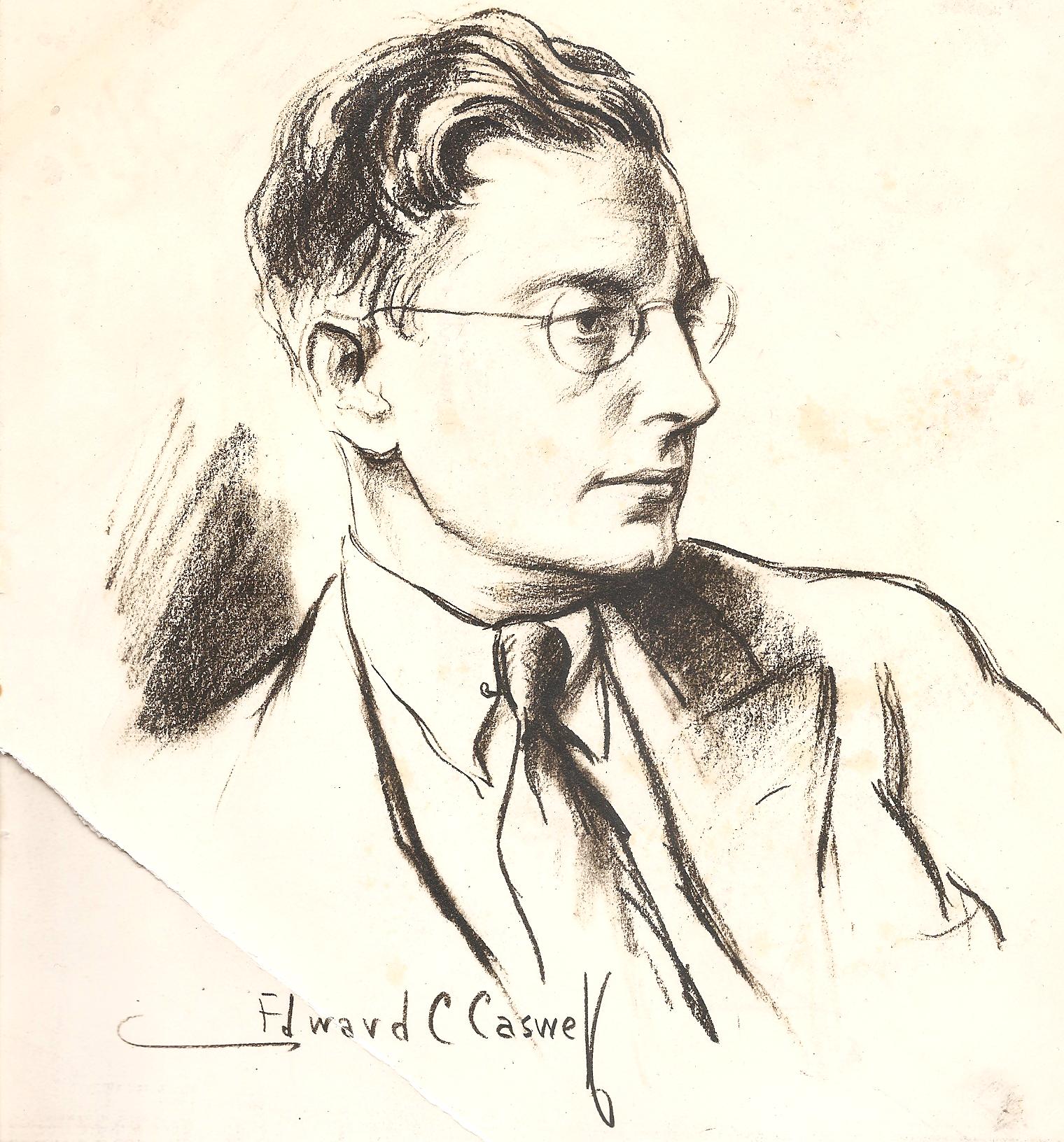
"EDWARD C. CASWELL -
Self-Portrait"
"It was an ant with a crumb twice its size in its jaws slowly making its way over the twigs. It occurred to me that if I was that little ant, the shrubbery would look like a great forest and so with my face close to the ground I tried to view the scene as my minute energetic acquaintance was observing it. In a moment the twigs became great fallen trunks, the dried spruce shrubs turned to gigantic trees with twisted branches and I was looking into a forest out of the depths of which a band of Nibelungs laden with gold and silver treasure, and even Wotan himself, might have come". -- Edward C. Caswell, "Artist Draws the Narrowest City Dwelling," The Villager (1933)
Before Manhattan's West Village became one of America's financially richest zipcodes, a neighborhood of noisy outdoor eateries, Madison Avenue shops and streets cordoned off by television crews -- it was a quiet place to live, a culturally rich community, one that Edward C. Caswell (1879-1963) delightfully illustrated for decades. Throughout the 1930s and 1940s, Caswell's drawings appeared regularly on the cover of The Villager, a newspaper that still publishes from an office on Canal Street where I had my first glimpse of the range of Caswell's fascinations in the bound volumes there. Caswell wrote an occasional column for the paper as well. And he was a book illustrator, traveling to Europe in the 1920s capturing Florence, Amsterdam and Budapest with pencil, pen & ink long before Hitler's armies had their way.
I was intrigued to see some of these illustrations pop up in the local flea market recently. My favorite are the artist's portraits of the West Village streets and lanes, of the interiors and exteriors of the homes of its residents, like poet Edna St. Vincent Millay, who lived in the narrowest house in New York, a Dutch house -- once "a maltster's, a cobbler's and a candy factory."
There is scant information about the life of Edward Caswell. Why, I wondered. Yes, there are other unsung New York illustrators from that period, but Caswell had a real point of view, could amuse as well as draw with serious historical accuracy. And was prolific.
Looking through the microfilm at New York University's Bobst Library for his many covers of The Villager, it was clear to me that Caswell's drawings were personal. He put his "face close to the ground," knew the people, the art clubs and studios, the lanes and alleyways, gardens and rabbits he drew.
In 2006, Peter Duveen, another Caswell enthusiast, organized a show of the artist's life and work, "Edward C. Caswell, Art and Correspondence," at The Museum of Brooklyn Art and Culture in Bridgeport, Connecticut. Duveen noted that Caswell's career "embraced newspaper work, advertising art and book illustration" and that he started out at a studio in the Ovington Building on Fulton Street before moving to the famed Chelsea Hotel on 23rd Street in the 1930s.
Duveen told me Caswell helped establish and promote the Washington Square Outdoor Art Exhibition.
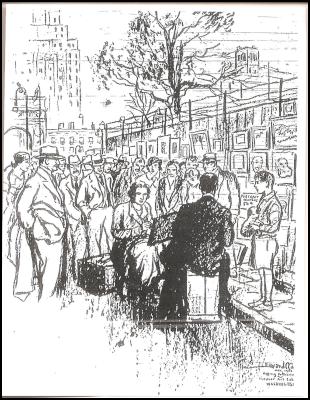
Click for big version.
The Villager, in fact, features Caswell's drawing of the outdoor art exhibition on its May 4, 1933 cover (see above) with an accompanying story saying that it was the third year for the show, and that it was the first such event of its type in America. These were the Depression years and the article notes further that the umbrella organizing group was the Artists' Aid Committee. Five hundred artists displayed their work with 20,000 people visiting.
Duveen asked if I'd be on the lookout in the Bobst microfilm for Caswell images of Bank Street where he, Duveen grew up -- a couple of doors from the townhouse of "Auntie Mame," i.e., Mrs. Tanner, playwright Patrick Dennis's real aunt who lived at 72 Bank and was his inspiration for the character. Unfortunately, I could find no Auntie Mame in the Caswell trove.
Duveen also told me that he had copy of a book Coasting Down East written by Ethel Hueston and illustrated by Caswell, an account of a trip Hueston and her husband and daughter took through Maine with Mr. and Mrs. Edward Caswell. Duveen thinks it "paved the way" for Caswell's illustration of several books written by Robert Medill McBride, which took the two traveling through various European destinations (Germany, Italy, Czechoslovakia).
Caswell seemed to like the area around Bedford and Morton Streets in the West Village. And he wrote of the struggle of Edna St. Vincent Millay, whose house was on Bedford and Commerce Street near the Cherry Lane Theatre, to persuade the city to rename Commerce Street "Cherry Lane," which the city refused to do. No matter, it is still Cherry Lane to West Village residents.
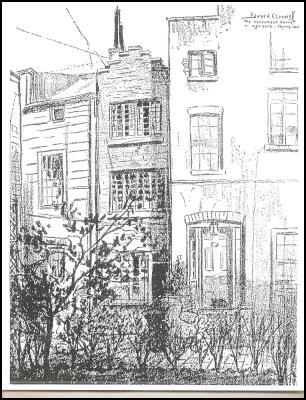
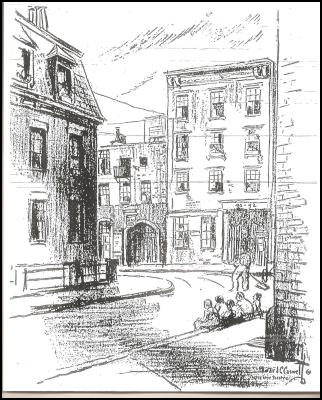
Left:
Poet Edna St. Vincent Millay's House
(1933). (Click for big version.)
Right: Cherry Lane Theatre (1933). (Click for
big version.)
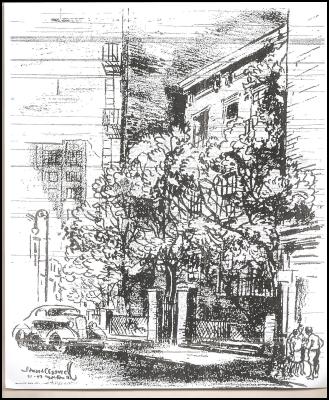
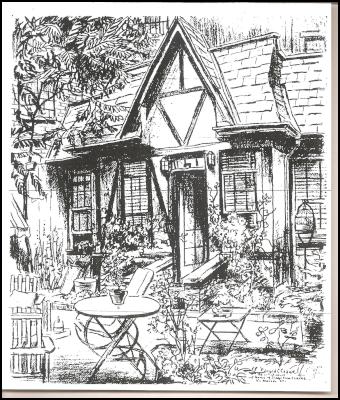
Left:
41-43 Morton Street (1938). (Click here
for big version.)
Right: 51 Morton Street (back of Cherry Lane
Theatre) - Home of Author Glady Shaw Erskine (1939).
(Click for big version.)
Caswell also mentions in his column that actor John Barrymore once lived there in the little Dutch house and that Millay wrote her opera with Deems Taylor, The King's Henchman, in the top floor studio. At some point, song writer Harry Woods was an occupant. When Caswell visited in the 1930s, the eight-foot wide house was home to Mrs. Robert W. Lewis. He wrote that it was decorated with "rich and mellow" antique mahogany furniture and near the fireplace was a Victorian chair that "[G]randfather Lewis took around the Horn during the gold rush of 1850."
Now on any given day, there are tourists taking photos of the narrowest house in New York, which bears a red plaque with the dates Millay lived there (1923-24) and her famous quote, "my candle burns at both ends". The house is just across the street from 81 Bedford Street where the late CIA director Richard Helms conducted his MKULTRA mind control experiments (no red plaque there).
Here are a few more vignettes of Caswell's favorite neighborhood from the covers of The Villager :
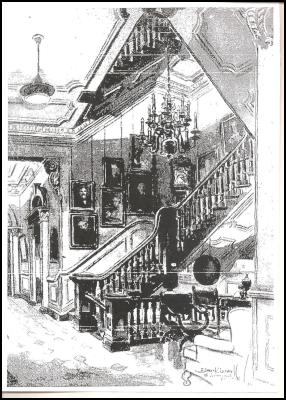
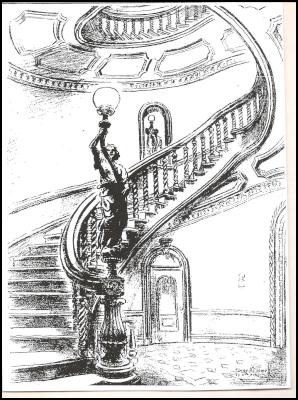

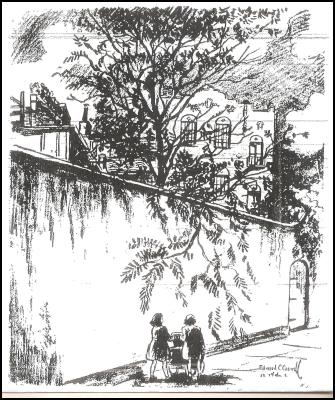
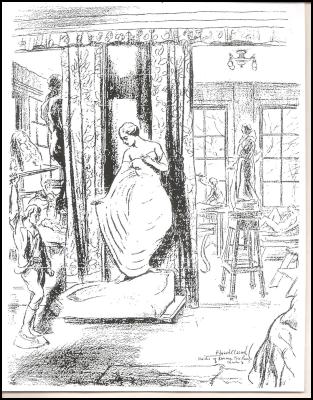
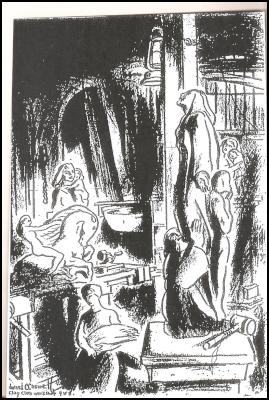
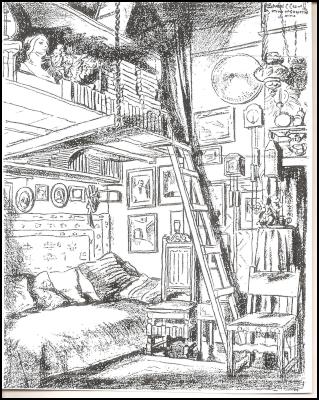
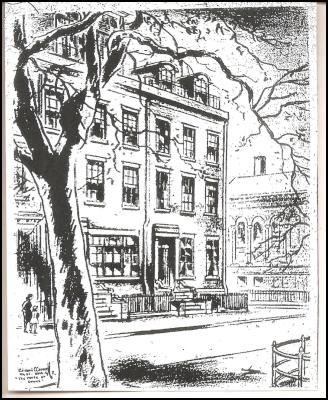
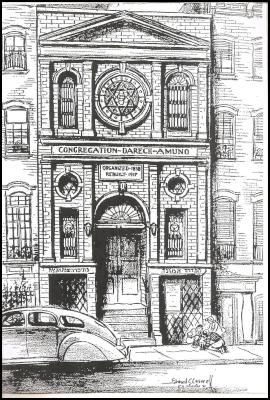
From left
to right (click for big versions of
each):
Top:
• Salmagundi Club, 46 Fifth Avenue (1942 -
men-only art club)
• 1850s Mansion with Circular Staircase - 63
Fifth Avenue (1941)
• Jefferson Market Minaret Tower (court
adjacent to the infamous Women's House of Detention)
(1933)
Middle:
• 72 Seventh Avenue South (wall protecting
Dutch house) (1938)
• Studio of Texas Sculptor Bonnie MacLeary on
Charles Street (1940)
• The Clay Club (former stable)
(1944)
Bottom:
• Studio of G.W. Harting, Photographer and
Collector of Ancient Musical Instruments, 51 West 10th
Street (1940)
• House of Genius - Literary Residence,
Washington Square (1945)
• Darech - Amuno, Charles Street
(1941).
 Suzan Mazur
is the author of The Altenberg 16: An Exposé of
the Evolution Industry.Her reports have
appeared in the Financial Times, The Economist, Forbes,
Newsday, Philadelphia Inquirer, Archaeology, Connoisseur,
Omni and others, as well as on PBS, CBC and MBC. She has
been a guest on McLaughlin, Charlie Rose and various Fox
Television News programs. Email: sznmzr@aol.com
Suzan Mazur
is the author of The Altenberg 16: An Exposé of
the Evolution Industry.Her reports have
appeared in the Financial Times, The Economist, Forbes,
Newsday, Philadelphia Inquirer, Archaeology, Connoisseur,
Omni and others, as well as on PBS, CBC and MBC. She has
been a guest on McLaughlin, Charlie Rose and various Fox
Television News programs. Email: sznmzr@aol.com


 Gordon Campbell: On Budget 2025
Gordon Campbell: On Budget 2025 Keith Rankin: Using Cuba 1962 To Explain Trump's Brinkmanship
Keith Rankin: Using Cuba 1962 To Explain Trump's Brinkmanship Binoy Kampmark: The Killing Of Israeli Embassy Staffers - Netanyahu’s Antisemitism Canard
Binoy Kampmark: The Killing Of Israeli Embassy Staffers - Netanyahu’s Antisemitism Canard Keith Rankin: Zero-Sum Fiscal Narratives
Keith Rankin: Zero-Sum Fiscal Narratives Eugene Doyle: Chinese Jet Shoots Down France’s Best Fighter; NZ And Australia Should Pay Attention
Eugene Doyle: Chinese Jet Shoots Down France’s Best Fighter; NZ And Australia Should Pay Attention Ian Powell: “I Can Confirm They Are Hypotheticals Drawn Largely From Anecdotes And Issues The Minister Has Heard About.”
Ian Powell: “I Can Confirm They Are Hypotheticals Drawn Largely From Anecdotes And Issues The Minister Has Heard About.”